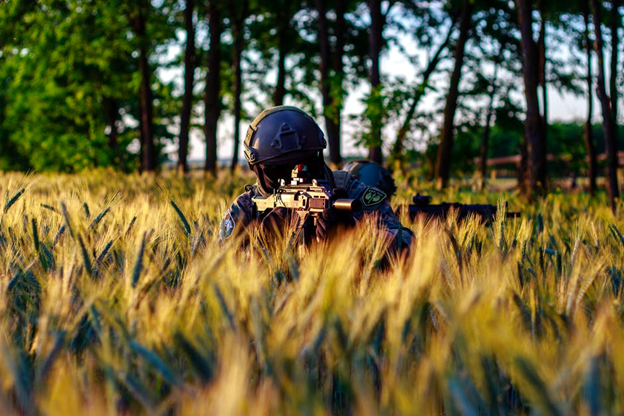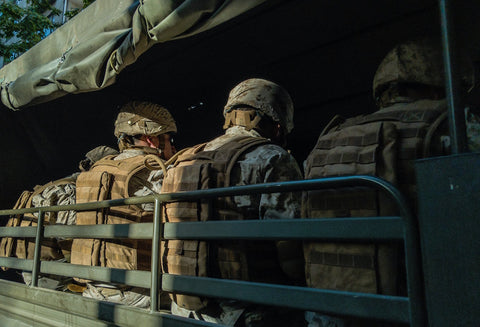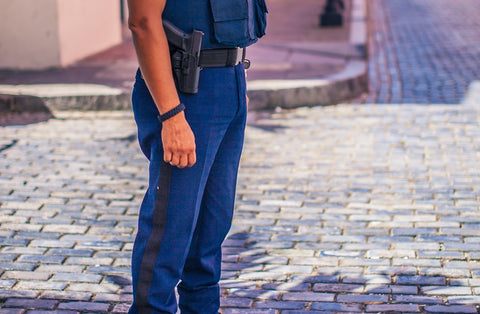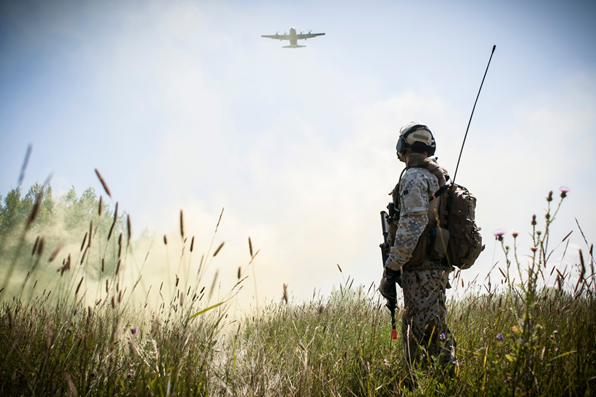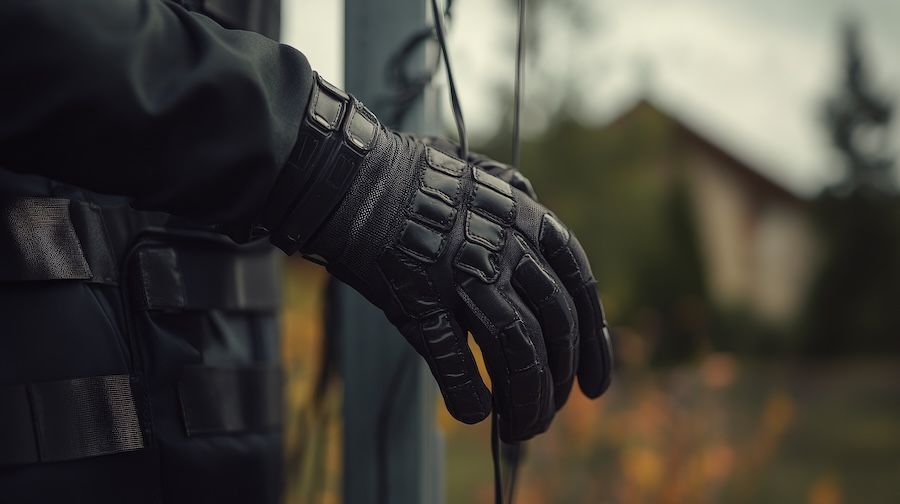Ballistic Protection Demystified: Helmets, Plates, and What You Really Need
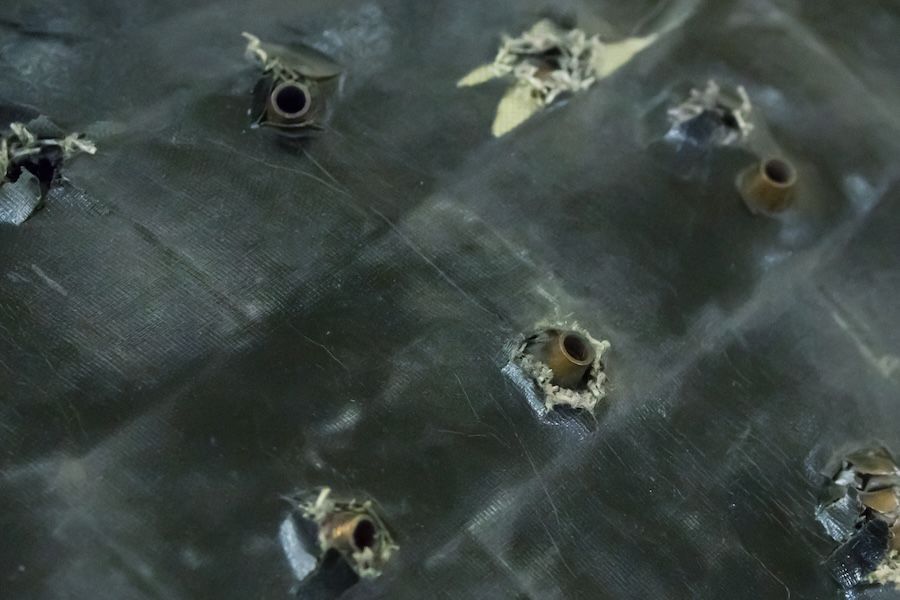
What is ballistic protection, really? Well, it’s giving your body a fighting chance when things go sideways.
Ballistic protection is gear designed specifically to stop bullets, or at least slow them down enough to save your life. You’ve probably heard the term tossed around, but what exactly are you being protected from? Handgun rounds, rifle bullets, and even shrapnel from explosions.
Whether it’s a helmet, vest, or plate carrier, the goal is simple: keep vital areas covered and protected from incoming threats.
Different pieces of equipment are designed to handle different situations.
A vest that stops a 9mm round might not do much if you're facing a high-powered rifle. That’s where understanding levels of protection becomes important, but more on that in the next section.
It’s also worth clearing up a common mix-up: ballistic protection isn’t the same as stab or slash resistance.
A bulletproof vest won’t necessarily protect you from a knife or a spike. Some gear does both, but not all. That’s why knowing the type of threat you’re most likely to face is key.
Ballistic protection focuses on absorbing and dispersing the energy of a bullet. Stab-resistant gear is built differently to prevent sharp objects from piercing through. The two aren’t interchangeable, so you’ll want to choose the right one depending on your line of work or personal risk.
Whether you’re on patrol, part of a tactical team, or just looking to boost your personal safety setup, ballistic protection is one of the core pieces of gear to think about. It doesn’t make you invincible, but it gives you a better shot at walking away when it counts.
How Ballistic Ratings Work (NIJ Levels Explained)
If you’ve ever shopped for body armour, you’ve probably come across a bunch of codes like Level IIIA or Level IV. It can feel a bit overwhelming at first. These labels come from the NIJ, or National Institute of Justice. It’s the standard used in North America to rate ballistic protection, and it helps you know exactly what your gear is designed to stop.
Here’s how it breaks down.
Level IIA is the lightest and offers protection against smaller handgun rounds like 9mm and .40 S&W. It’s slim and easy to wear but not used as often these days.
Level II adds a bit more coverage, also aimed at handguns.
Level IIIA is the most common for soft body armour. It can stop larger handgun rounds like .357 SIG and .44 Magnum. If you’re wearing a bulletproof vest for everyday duty, you’re probably looking at IIIA.
Now, when rifles enter the picture, you move into the hard armour levels.
Level III can stop rifle rounds like 7.62mm FMJ (think AK-47). Level IV is the highest level, made to stop armour-piercing rounds like .30-06 M2 AP. These usually require hard plates made of materials like ceramic or steel. They’re heavier but built for high-risk scenarios.
Soft armour usually covers you up to Level IIIA. Hard armour plates are needed for Level III and IV protection. That’s a big difference in weight, bulk, and flexibility. Soft armour is easier to move around in and more comfortable for long wear. Hard plates are better when you’re heading into an active shooter situation or high-risk environment.
Other countries use different systems, like VPAM in Europe or STANAG for NATO gear. They follow similar ideas but have their own testing methods. If you're buying gear outside Canada, double-check that the protection level is clearly stated and equivalent to what you're used to.
Choosing the right level isn’t just about picking the highest one. It’s about matching your gear to the job. No sense in wearing heavy rifle plates for basic patrol if the real threat is handguns. You want the right balance between protection and practicality.
Helmets: Your First Line of Defence Above the Neck
When things go wrong, your head is one of the first places you want protected. That’s where ballistic helmets come in. They’re built to stop or deflect fragments, handgun rounds, and other projectiles. Most of them are rated Level IIIA, which means they can stop large-calibre handgun bullets like .44 Magnum. That’s a solid level of protection for many tactical and law enforcement roles.
There are a few different helmet styles you’ll see out there. The PASGT is the old-school military style, bulkier and heavier, but it gets the job done. MICH helmets are a bit more modern, offering a better balance between protection and comfort. Then there’s the FAST helmet, which is popular with special operations and tactical teams. It has a high-cut design that gives you more room for communication gear and accessories, like night vision mounts or hearing protection.
Weight and fit matter a lot here. A helmet that’s too heavy or doesn’t sit right will wear you down fast. If you’re wearing it for hours on end, comfort makes a difference. Some models come with suspension systems and padding that help distribute the weight more evenly.
You’ll also want to think about whether you need rails or mounts for extra gear. That’s where FAST and MICH styles tend to shine.
For everyday patrol, you might not need a helmet at all times, but if your job includes crowd control, high-risk raids, or tactical entries, having one ready is smart. It’s your best bet against flying debris or unexpected threats.
If you’re shopping for a helmet, make sure it’s certified and tested. PSP Corp offers helmets that are NIJ Level IIIA certified and trusted by professionals across Canada.
Whether you're on the frontlines or prepping your kit for emergencies, quality matters. A cheap knock-off might look the part but fail when it really counts.
Armour Plates 101: Soft vs. Hard, Ceramic vs. Steel
When it comes to body armour, there’s a lot of talk about plates. But not all plates are made equal, and not everyone needs the same kind. The two big categories are soft armour and hard plates.
Soft armour is usually made of woven fibres like Kevlar. It's lightweight, flexible, and often worn under clothing. You’ll see it in use by patrol officers, private security, and others who expect to face handguns, not rifles.
Hard armour plates are a different story. These are rigid inserts that slide into plate carriers. They’re built to handle rifle rounds and are often used in tactical, military, or high-risk environments. Within the hard armour category, you’ll find a few different materials: steel, ceramic, and polyethylene (often labelled UHMWPE).
Steel plates are tough. They can take multiple hits, last a long time, and are more affordable than other options. But they’re heavy. Really heavy. That weight can slow you down, especially over long periods. They also tend to cause more blunt force trauma due to less energy absorption, and you’ll need a spall liner to prevent fragments from bouncing back toward your body or face.
Ceramic plates are lighter than steel and better at dispersing energy. They usually break on impact, but that’s part of how they stop bullets. A good ceramic plate will stop a high-powered round and reduce the force that reaches your body. The tradeoff is that they’re more fragile. Drop one on a hard surface and you might compromise its integrity without realizing it.
Polyethylene plates are even lighter. They float in water, which gives you a good idea of just how light they are. They’re great at stopping bullets through heat and friction, but they’re not cheap. Still, if weight is a concern and you need rifle protection, they’re a solid choice.
Understanding Real-World Threats and Use Cases
Choosing the right ballistic protection isn’t just about picking the strongest plate or the most advanced helmet. It’s about understanding the threats you actually face. The gear needs to match your reality.
Start by thinking about your role. Are you a patrol officer walking city streets? Your biggest risk may be handguns. A soft vest with Level II or IIIA protection could cover most of what you’re likely to encounter.
Are you working in corrections or handling crowd control? You might face blunt force, stabbing threats, or thrown objects. That means you need to consider multi-threat protection that includes stab resistance and trauma pads.
If you’re on a tactical team or part of a high-risk unit, you need to plan for rifle threats. Level III or IV plates become essential here. Same goes if you’re in private security and working in volatile environments, especially where long guns are in play. Whether it’s guarding high-value assets or protecting individuals in unstable regions, higher protection is worth the extra weight.
Location matters too. Urban areas bring different threats than rural ones. In cities, handguns are more common. Out in the country or remote areas, rifles might be a bigger concern.
Think about what’s realistic in your daily routine. It’s easy to get caught up in “more is better,” but that’s not always true. Wearing heavy, bulky gear when you don’t need it can slow you down and lead to fatigue.
There's also such a thing as over-protection. Some gear looks great on paper but isn't practical for your actual job. It could limit your movement, make you sweat through your clothes, and leave you drained after a few hours. You don’t want to be in a situation where you’re constantly adjusting your gear or feeling weighed down when you need to be alert and mobile.
Take time to assess your environment, your role, and the likely threats. That’s the only way to strike the right balance between safety and functionality.
Comfort, Fit, and Mobility: What People Overlook
One of the most overlooked parts of ballistic protection is how it actually feels to wear. It’s easy to focus on ratings and materials, but if your gear isn’t comfortable, it won’t work for you when it really matters. If it pinches, shifts, or drags you down, it’ll end up in the back of your closet instead of on your body.
Weight plays a huge role here. Even small differences in weight can have a big impact over time. A few extra pounds might not sound like much, but try wearing that extra load for an entire shift or during a high-stress situation. You’ll feel it in your back, shoulders, and legs. That kind of fatigue slows your reaction time and clouds your thinking.
Fit is just as important. Ill-fitting armour leaves gaps, shifts during movement, and can even expose vital areas. A proper fit should follow the shape of your body without digging into your neck or riding up when you sit or crouch. That goes for helmets too. A helmet that’s too tight gives you headaches, and one that’s too loose shifts around or falls forward, blocking your view.
Mobility is another factor people often forget about. You should be able to bend, run, sit, and reach your gear without fighting against your vest or helmet. If your protection gets in the way of your movement, it's going to slow you down in a real-world scenario.
Some setups allow for more flexibility than others. Look for modular gear with adjustable straps, removable panels, and add-on accessories. That way, you can customize your loadout depending on the day, the mission, or the weather. You can start light and scale up if needed. This kind of flexibility helps you stay prepared without overdoing it.
What to Look for in Gear: Certification, Warranty, and Manufacturer Trust
Ballistic gear isn’t something you want to take chances on. Whether you're buying a helmet, vest, or plate, you need to know it’s actually going to do the job. That starts with certification.
If it’s not NIJ certified, skip it. NIJ (National Institute of Justice) testing is the gold standard in North America. It’s how you know your gear has been pushed to its limits and passed. Not just in theory, but in actual controlled conditions.
Look for the rating level clearly marked on the gear. Not in the description, not as a casual mention, but on the label itself. If a product claims to meet NIJ standards but doesn’t show proof, that’s a red flag. Some manufacturers try to get around testing by calling their gear “NIJ tested” without showing you the results. If it sounds vague, it probably is.
Always ask to see the official lab report if you're unsure.
You’ll also want to check the warranty. Good manufacturers stand by their gear, because they know it performs. That means multi-year coverage and clear return policies. If the fine print is hard to find or full of loopholes, move on. The same goes for expiry dates. Yes, ballistic gear expires. Over time, materials degrade, especially if the gear is stored in poor conditions or exposed to moisture and UV. Don’t use outdated gear thinking it’s “probably fine.” That gamble isn’t worth it.
Buying online? Be extra cautious. There's a flood of cheap gear from unknown brands, and it’s hard to separate the real from the risky. Stick with trusted retailers and known manufacturers. Look for detailed product specs, clear photos of the labels, and real customer reviews. And if the price looks too good to be true, that’s usually a sign.
At PSP Corp, every item is field-proven and backed by proper testing. From Level IIIA helmets to ceramic plates, everything we offer meets or exceeds certification standards. Whether you’re outfitting a team or looking for personal protection, you can shop with confidence knowing we’ve already done the hard part: vetting what works and what doesn’t.
Final Checklist: Choosing What’s Right for You
Now that you’ve got the facts, it’s time to put it all together. Picking the right ballistic gear doesn’t have to be overwhelming. It just takes a bit of clarity on what you actually need. Here's a quick checklist to help you sort it out.
1. What are you protecting against?
Start with the threats. Are you likely to face handguns, rifles, or a mix? If handguns are your main concern, look at soft armour with Level II or IIIA protection. If rifles are a possibility, you’ll want hard plates rated Level III or IV. Always match the gear to the real-world risks you face.
2. What’s your environment?
Are you in tight urban spaces, wide-open rural areas, or high-risk zones? City patrol officers might prioritize light, concealable vests. Remote responders or tactical teams need gear that can handle long guns and extended wear. Your surroundings matter just as much as the threat.
3. Can you wear it for hours?
If it’s too heavy, too bulky, or too hot, you won’t want to wear it, which defeats the whole purpose. Make sure it fits properly, distributes weight well, and doesn’t restrict your movement. Try it on, walk around, crouch, reach for your belt. If it feels off now, it’ll feel worse later.
4. Is it certified and current?
Double check that the gear is NIJ certified and hasn’t expired. That includes helmets, vests, and plates. Don’t forget to ask about the warranty and how to care for your gear. Proper storage and maintenance can stretch the life of your equipment and keep it in good shape.
5. Are you buying from someone you trust?
Only buy from reputable brands or retailers. Do a quick background check; read reviews, ask questions, and check for proper documentation. The right gear comes from people who take your safety as seriously as you do.
Getting it right means balancing protection, comfort, and trust in what you're wearing. Whether you’re buying for yourself or a whole team, the goal is the same: gear that works when you need it most.


